Grow Canna Flowers for Tropical Beauty in the Garden
Updated: May 14, 2024
Cannas flowers, sometimes called canna lilies, are semi-tropical plants that grow from rhizomes. Gardeners love the bold flowers and foliage.
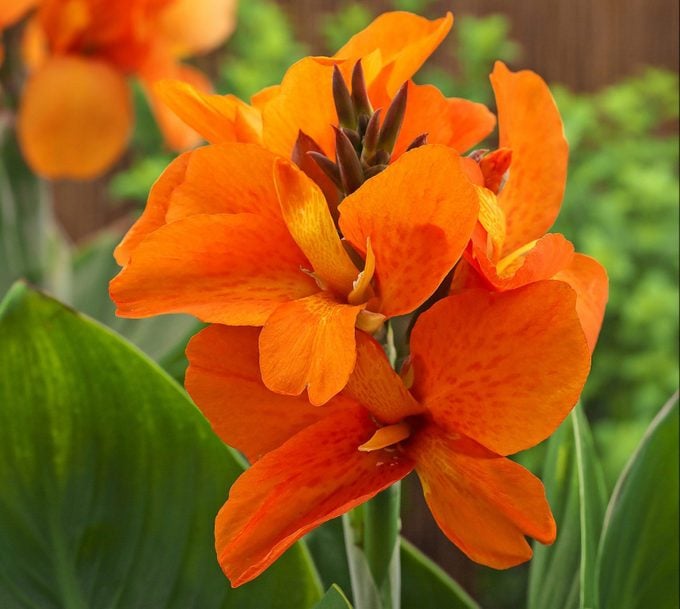
When we bought our home in Florida several years ago, we found several treasures in the otherwise bland backyard. As we dug up an area to create my native butterfly garden, we came across several large rhizomes, apparently dormant. We weren’t sure what they were, so for the time being, we popped them into a pot and waited to see what would happen. With a few months, our rhizomes had put on 5 feet of growth with giant leaves followed by brilliant pink blooms. We had found a treasure trove of canna flowers!
Get expert calla lily care and growing tips.
Canna Flower Care and Growing Tips
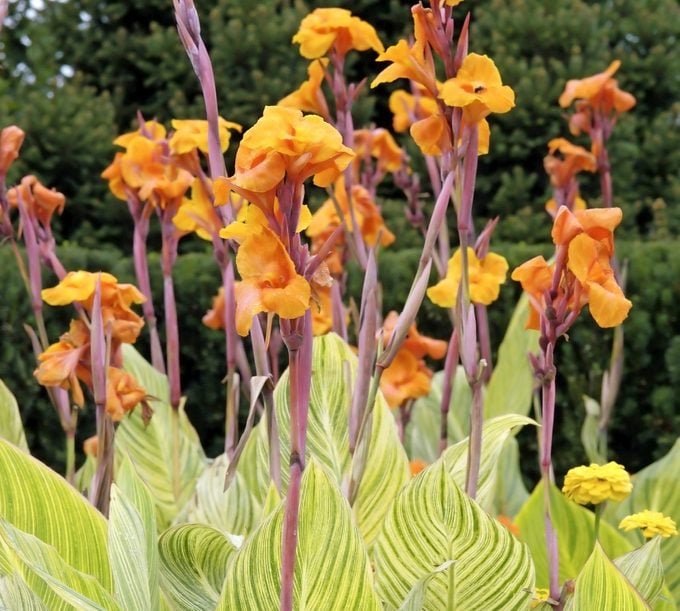
Canna flowers, sometimes called canna lilies, are semi-tropical plants that grow from rhizomes. They are native to the warmer areas of the Americas. Golden canna (Canna flaccida) is native in the southeast United States, but most cannas flowers you buy today are cultivars or hybrids of a variety other species. This has given us a wide range of colors and growth habits, including some that are only about 2 feet tall instead of 5 to 8 feet, like the native varieties. Plant cannas in the spring for summer blooms.
- Canna
- Zones 7 to 10 (sometimes zone 6 with protection)
- Full sun
- Moist, well-draining soil
Cannas need moist soil to perform well. They’re perfect for wet spots in the garden, such as an area where a downspout directs water. You can also plant taller varieties directly in water, up to about 2 feet deep. Choose a spot with full sun or partial shade, where these flowers can tolerate slightly drier soil in my experience.
Learn how to care for a peace lily plant.
Cannas Foliage
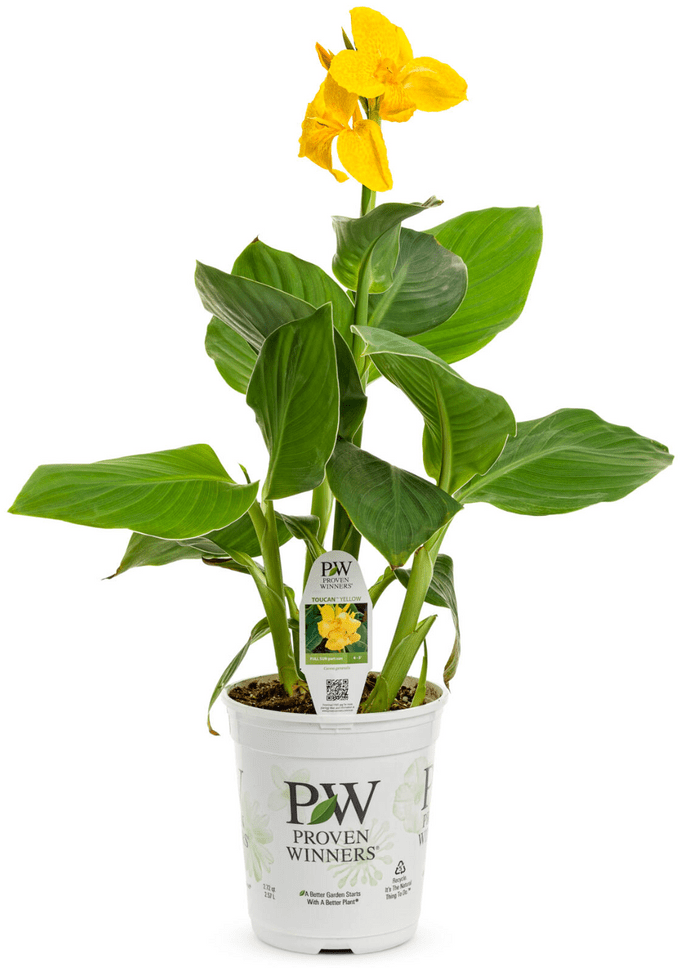
While the flower spikes are impressive in their own right, these plants are beloved for their foliage. The large, boldly colored leaves create a tropical effect when combined with other bright, flowering plants. Some varieties have bronze or even striped foliage.
These water lily flower pictures will take your breath away.
Overwintering Canna Plants
Cannas grow from fleshy rhizomes. In northern growing zones, dig them up in fall and overwinter in sawdust or peat moss in a cool, dry area. Replant the rhizomes next spring, after the threat of frost passes.

“This plant (above) popped up in our landscaping this summer. Our best guess is that it came with the mulch. What is it, and should it be removed?” asks Birds & Blooms reader Tom Paul of Naperville, Illinois.
Horticultural expert Melinda Myers says, “What a wonderful surprise to find a volunteer canna plant surviving the winter in northern Illinois! These plants are typically hardy to Zone 7, with the possibility of some surviving in Zone 6 when heavily mulched.
The new USDA Plant Hardiness map has areas of Naperville listed as Zone 6a and those further from Chicago as 5b. Perhaps a plant or portion of the rhizome was accidentally left in the ground over winter. The close proximity to your house provided a sheltered winter location and a bit of radiated heat for additional warmth.
Enjoy this lovely survivor and decide if you want to dig it up and store it indoors for winter or see if it will survive again in the garden.”
Canna Plant Pests
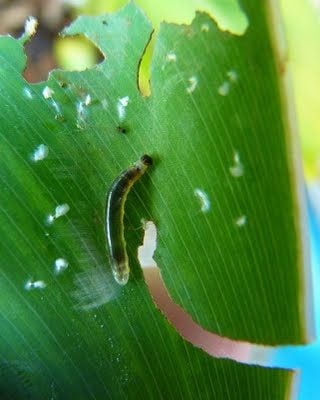
In their native areas, cannas can be afflicted by the leaf-rolling caterpillars of canna skippers (Calpodes ethlius). These little guys can do some real damage to the foliage if they’re not noticed right away, but usually won’t affect the flowering or overall health of the plant.
As soon as you notice signs of leaf-rolling, pull the leaf apart and remove the caterpillar inside. Drop it in in soapy water to kill it. You can also watch for eggs on the leaves and remove them first.
True lily vs daylily: what’s the difference?
Canna Flower Varieties
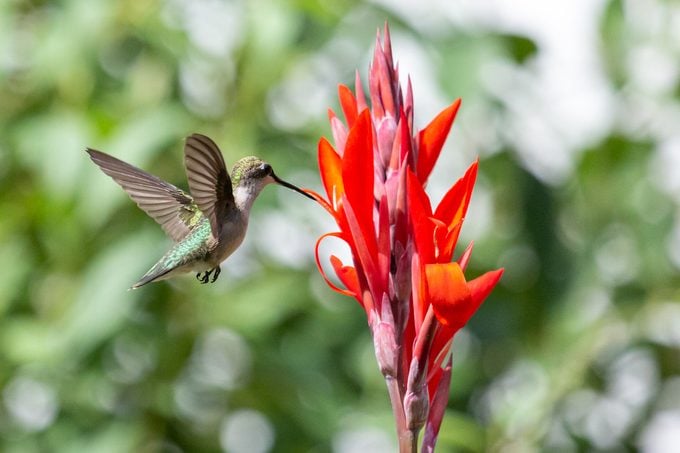
Hundreds of canna varieties are available. Try the vigorous, heat-loving South Pacific, an All-America Selections Winner with glowing orange flowers. This variety is grown from seed instead of rhizomes.
For gorgeous golden flowers, plant Toucan Yellow. Red varieties like ‘King Humbert’ will attract hummingbirds.
Next, learn how to grow Persian lily flowers for dark garden drama.
About the Expert
Melinda Myers is the official gardening expert for Birds & Blooms. She is a TV/radio host, author and columnist who has written more than 20 gardening books. Melinda earned a master’s degree in horticulture from the University of Wisconsin-Madison.
Sources
Why Trust Us
For nearly 30 years, Birds & Blooms, a Trusted Media Brand, has been inspiring readers to have a lifelong love of birding, gardening and nature. We are the #1 bird and garden magazine in North America and a trusted online resource for over 15 million outdoor enthusiasts annually. Our library of thousands of informative articles and how-tos has been written by trusted journalists and fact-checked by bird and garden experts for accuracy. In addition to our staff of experienced gardeners and bird-watchers, we hire individuals who have years of education and hands-on experience with birding, bird feeding, gardening, butterflies, bugs and more. Learn more about Birds & Blooms, our field editor program, and our submission guidelines.



















